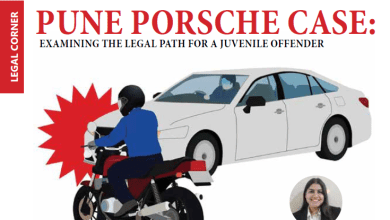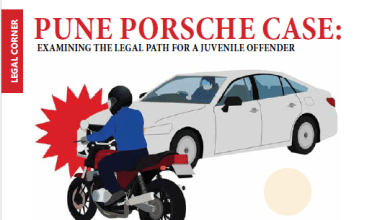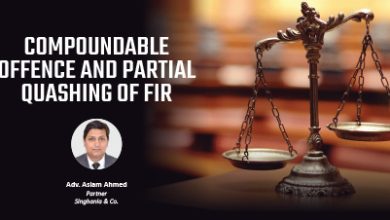Estate planning – A Circumspect step towards Estate Legacy

Company Secretary and Head – Legal
at Matix Fertilisers & Chemicals Limited

Estate planning is a process of succession and financial planning. It makes provisions for estate management, estate preservation and creating a legacy for the estate. Estate planning can be done in a number of ways — through wills or trusts or a combination of both.
Indians tend to neglect estate planning. At times, it’s simply because of a complacent attitude, or, at times the motive to plan succession in a tax efficient manner is lacking. This is in contrast with countries such as the US and UK, where inheritance taxes are applicable and people focus on estate planning as a mode of taxation planning as well.
As a result of a lack of well-structured estate planning in India, intended beneficiaries at times do not receive the property after the death of loved ones. Furthermore, the process could get embroiled in legal battles and the intention, that the estate must pass on, in a timely and hassle- free manner, gets defeated. It is easy to see that one of the most important things we can do is plan for the protection and smooth succession of our assets.

One of the most efficient modes of estate planning is by forming a private family trust. A private family trust can be established while a person is alive, and the legal ownership of the trust assets is passed to the trustee who in turn ensures that the intentions of the person settling the trust are taken care of.
Once a person has decided he is interested in creating a private family trust for the protection and smooth and unhindered succession of his assets, there are a number of considerations which need to be given attention, some of which are briefly discussed below-
Listing down the objectives:
The structuring of a particular trust depends upon the intentions and objectives which the settlor or the creator of the trust wishes to fulfill through the trust.
The objectives for settling a trust may include:
- Consolidation and smooth and unhindered succession of assets;
- Protecting interests of family members and ensuring that their financial needs are taken care of;
- Ring-fencing assets against possible financial obligations and estate duty, if reintroduced in India;
- Taking care of unforeseen eventualities like incapacity and untimely demise.
Trust Structuring
The citizenship of settlor/beneficiaries, ownership pattern and location of the assets, domicile status of family members and stamp duty are among the other aspects which need close consideration. Depending on all these factors, the nature of the trust will be decided; the trust could be revocable or irrevocable depending on the family situation. The family could also decide to create multiple structures to meet various family needs.
Who will be involved?
The first step in forming a private trust is to identify and decide the persons who will be associated with the trust. Following are the persons who are typically associated with the trust:
- Settlor: The person who is creating the trust and plans to settle his/her assets therein;
- Trustee/s: The people who manage the trust. While some individuals name themselves, a family member, or friend as a trustee; others prefer to choose a trusted financial institution for this important role for the continuity, prudence, expertise and professionalism it can provide.
- Beneficiaries: The people for whose benefits the trust is being created.
Creation of the Trust
Translating the intentions of the family into a document called the trust deed would be the all- important next step. It is crucial that the trust deed, being the charter document of the trust, is drafted and reviewed carefully so as to ensure that the objectives, for which the structure is created, are met.
Instrument of Trust
An instrument of trust is an instrument in writing executed by a settlor and trustee. The provisions of a trust instrument depend upon the intentions of the settlor and the nature of the trust structure and could in general have the following provisions:
- The name of the settlor, beneficiaries and the trustee of the trust;
- Powers to add and exclude beneficiaries;
- Power of revocation of the trust, if any.
- Power of investments, distributions etc.;
- Appointment, resignation and/or removal of the trustees;
- General powers of the trustees;
- Discretionary powers of the trustees, if any;
- Stage wise distributions to the beneficiaries, if so required by the settlor;
- Date of dissolution of the trust;
- Share of the beneficiaries where the trust has determinate shares;
- Succession plan of the beneficiaries.
Deciding on the assets to be transferred
The final step of the process should include making an inventory of the family assets and deciding what assets need to be settled into the trust. This decision will depend a lot on the intentions of the family, the type and number of trusts being created and the value and type of assets owned and careful consideration should be given to all these and other important factors. The ownership of these assets will then be transferred to the trust and the trustee/s on behalf of the trust shall hold such assets for the benefits of the specified beneficiaries.
Trust, Private and Public
A Trust may be Private and Public.
When the purpose of the trust is to benefit an individual or a group of individuals or his or their descendants for any legal person and who is capable of holding property, it is a private trust.
When the purpose of the trust is to the benefit the public or any section of the public, it is public trust.
Getting the right advice
A private trust structuring is quite technical and need legal and tax expertise. It is suggested that trust structuring and drafting of the trust deed be done by the legal & tax advisors and a professional trustee Advisor. That way the family can get the advantage of experience and expertise in this very specialized field, and they can ensure that their estate plan most efficiently meets their specific requirements.







